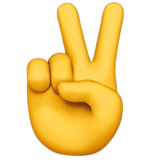
General development exercises - what is it and why?

General development exercises
- what is it and why?
- what is it and why?
Solovyova Marina Viktorovna
I will be glad to hear from you
ORU - General development exercises that:
1. Classified by anatomical feature:
- exercises for the arms and shoulder girdle;
- for the torso and neck;
- for feet.
And by direction:
- development of physical qualities and abilities (coordination, strength, flexibility, speed, balance, rhythm, plasticity, etc.)
- development of mental properties (attention, orientation in space, time, intelligence, etc.)
- development of functional systems of the body.
2. can be performed with different muscle tension, speed, at different pace and rhythm, and at any ROS session.
3. Alternate: muscle groups, body parts, complexity, orientation.
4. Can be used in the preparatory, main, and final part of the lesson to perform various tasks.
5. They can be performed with different items: gymnastic sticks, balls of different sizes, hoops, benches, ribbons, and hymns. walls, etc.
1. Classified by anatomical feature:
- exercises for the arms and shoulder girdle;
- for the torso and neck;
- for feet.
And by direction:
- development of physical qualities and abilities (coordination, strength, flexibility, speed, balance, rhythm, plasticity, etc.)
- development of mental properties (attention, orientation in space, time, intelligence, etc.)
- development of functional systems of the body.
2. can be performed with different muscle tension, speed, at different pace and rhythm, and at any ROS session.
3. Alternate: muscle groups, body parts, complexity, orientation.
4. Can be used in the preparatory, main, and final part of the lesson to perform various tasks.
5. They can be performed with different items: gymnastic sticks, balls of different sizes, hoops, benches, ribbons, and hymns. walls, etc.
- ORU complexes are especially important for children with ASD:1. Develop all functional systems of the body, form posture.
2. Prepare the child to perform complex exercises.
3. Discipline, develop imitative abilities and communication skills(in a group).
4. They teach you to stand still and not run away.
5. Can be used at home in daily charging.
The task of the trainer when compiling the complex: determine the task, choose the right pace and rhythm, the complexity of the exercises, instructions, the number of exercises, their dosage and sequence (at the initial stage, there may be only 3 exercises of 3-5 repetitions, gradually increasing the load), taking into account the speed of the child's fatigue (attention retention, level of endurance and muscle strength in the ability to hold a vertical pose for a long time).
Learning a single complex can take from several sessions to a month or more, all individually.
Combine, invent and improve!
Learning a single complex can take from several sessions to a month or more, all individually.
Combine, invent and improve!
ORU - General development exercises that:
1. Classified by anatomical feature:
- exercises for the arms and shoulder girdle;
- for the torso and neck;
- for feet.
And by direction:
- development of physical qualities and abilities (coordination, strength, flexibility, speed, balance, rhythm, plasticity, etc.)
- development of mental properties (attention, orientation in space, time, intelligence, etc.)
- development of functional systems of the body.
2. Сan be performed with different muscle tension, speed, at different pace and rhythm, and at any ROS session.
3. Alternate: muscle groups, body parts, complexity, orientation.
4. Can be used in the preparatory, main, and final part of the lesson to perform various tasks.
5. They can be performed with different items: gymnastic sticks, balls of different sizes, hoops, benches, ribbons, and hymns. walls, etc.
1. Classified by anatomical feature:
- exercises for the arms and shoulder girdle;
- for the torso and neck;
- for feet.
And by direction:
- development of physical qualities and abilities (coordination, strength, flexibility, speed, balance, rhythm, plasticity, etc.)
- development of mental properties (attention, orientation in space, time, intelligence, etc.)
- development of functional systems of the body.
2. Сan be performed with different muscle tension, speed, at different pace and rhythm, and at any ROS session.
3. Alternate: muscle groups, body parts, complexity, orientation.
4. Can be used in the preparatory, main, and final part of the lesson to perform various tasks.
5. They can be performed with different items: gymnastic sticks, balls of different sizes, hoops, benches, ribbons, and hymns. walls, etc.
- ORU complexes are especially important for children with ASD:1. Develop all functional systems of the body, form posture.
2. Prepare the child to perform complex exercises.
3. Discipline, develop imitative abilities and communication skills(in a group).
4. They teach you to stand still and not run away.
5. Can be used at home in daily charging.
The task of the trainer when compiling the complex: determine the task, choose the right pace and rhythm, the complexity of the exercises, instructions, the number of exercises, their dosage and sequence (at the initial stage, there may be only 3 exercises of 3-5 repetitions, gradually increasing the load), taking into account the speed of the child's fatigue (attention retention, level of endurance and muscle strength in the ability to hold a vertical pose for a long time).
Learning a single complex can take from several sessions to a month or more, all individually.
Combine, invent and improve!
Learning a single complex can take from several sessions to a month or more, all individually.
Combine, invent and improve!
Author of the article: Marina V. Solovyova ©

